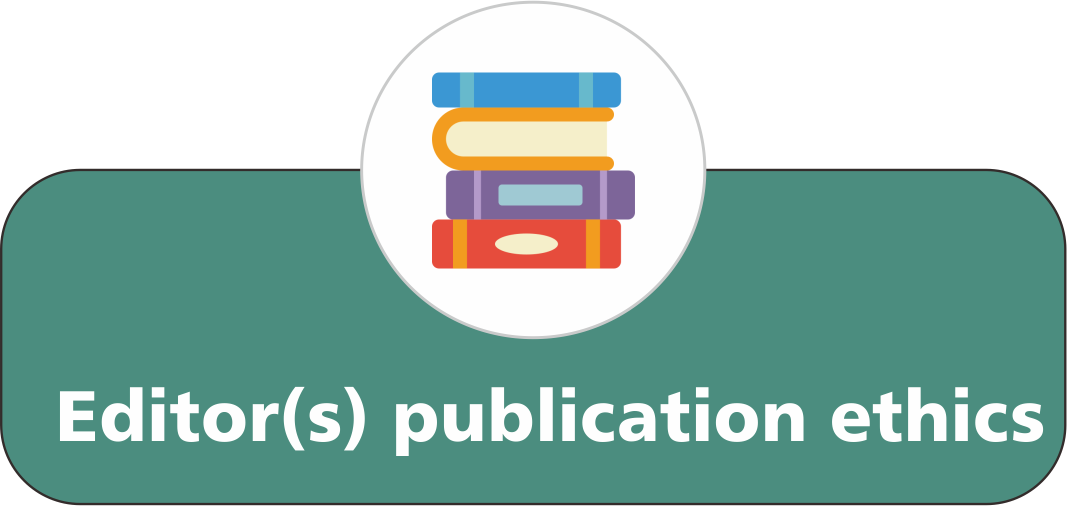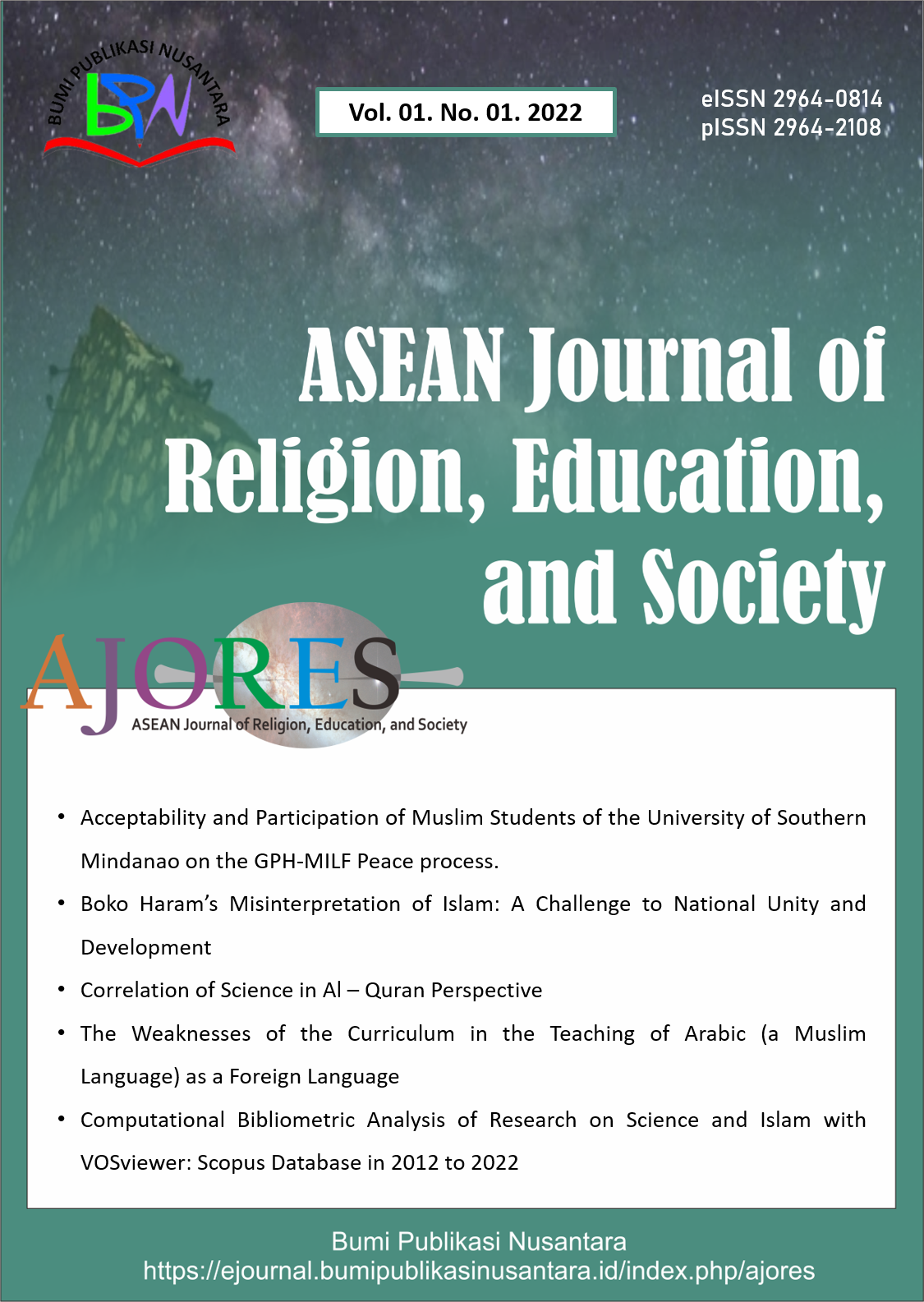Female Having Education in the World of Technology Wading Obstacle Facing Religious and Social Barrier
 ), Rashadur Rahman(2),
), Rashadur Rahman(2),
(1) Nizam Uddin Ahmed Model College
(2) Abdur Rashid Commerce College
 Corresponding Author
Corresponding Author
Abstract
Keywords
References
Ahmed, F., Sathi, N. A., and Islam, S. A. (2022). Challenges faced by working women in bangladesh and their perceived impacts on career. European Journal of Business and Management Research, 7(6), 177-182.
Ahmed, M. K., Halim, S., and Sultana, S. (2012). Participation of women in aquaculture in three coastal districts of Bangladesh: Approaches toward sustainable livelihood. World Journal of Agricultural Sciences, 8(3), 253-268.
Akhter, Z. (2013). Eve teasing, tears of the girls: Bangladesh open university towards women empowerment. International Women Online Journal of Distance Education, 2(4), 1-23.
Anderson, S., and Eswaran, M. (2009). What determines female autonomy? Evidence from Bangladesh. Journal of Development Economics, 90(2), 179-191.
Arafat, A., Ahmad, N. A., and Ismail, S. F. S. (2021). Socio-cultural gender norms and economic barriers in the context of rural high school girls’ dropout in Bangladesh: A qualitative study. Malaysian Journal of Social Sciences and Humanities (MJSSH), 6(8), 436-447.
Banarjee, S. (2020). Identifying factors of sexual violence against women and protection of their rights in Bangladesh. Aggression and Violent Behavior, 52, 101384.
Banu, D., Farashuddin, F., Hossain, A., and Akter, S. (2001). Empowering women in rural Bangladesh: Impact of Bangladesh rural advancement committee’s (BRAC’s) programme. Journal of International Women's Studies, 2(3), 30-53.
Bhowmik, J., Biswas, R. K., and Hossain, S. (2021). Child marriage and adolescent motherhood: A nationwide vulnerability for women in Bangladesh. International Journal of Environmental Research and Public Health, 18(8), 4030.
Bowl, M. (2001). Experiencing the barriers: Non-traditional students entering higher education. Research Papers in Education, 16(2), 141-160.
Cain, M., Khanam, S. R., and Nahar, S. (1979). Class, patriarchy, and women's work in Bangladesh. Population and Development Review, 5(3),405-438.
Chowdhury, F. D. (2009). Theorising patriarchy: the Bangladesh context. Asian Journal of Social Science, 37(4), 599-622.
Ghosh, P. K., Ghosh, S. K., and Chowdhury, S. (2018). Factors hindering women entrepreneurs’ access to institutional finance-an empirical study. Journal of Small Business and Entrepreneurship, 30(4), 279-291.
Gocio, D. M., and Kulkarni, K. G. (2016). Real challenges in the empowerment and development of the women of Bangladesh. ITIHAS The Journal of Indian Management, 6(1), 1-8.
Halder, N. (2004). Female representation in parliament: A case study from Bangladesh. New Zealand Journal of Asian Studies, 6, 27-63.
Hasan, N., and Bao, Y. (2020). Impact of “e-Learning crack-up” perception on psychological distress among college students during COVID-19 pandemic: A mediating role of “fear of academic year loss”. Children and Youth Services Review, 118, 105355.
Hoque, M. R., Saif, A. N. M., AlBar, A. M., and Bao, Y. (2016). Adoption of information and communication technology for development: A case study of small and medium enterprises in Bangladesh. Information Development, 32(4), 986-1000.
Hossain, M. J., Ahmmed, F., Rahman, S. A., Sanam, S., Emran, T. B., and Mitra, S. (2021). Impact of online education on fear of academic delay and psychological distress among university students following one year of COVID-19 outbreak in Bangladesh. Heliyon, 7(6), e07388.
Huque, A. S., and Akhter, M. Y. (1987). The ubiquity of Islam: Religion and society in Bangladesh. Pacific Affairs, 60(2), 200-225.
Kabir, M. S., Hou, X., Akther, R., Wang, J., and Wang, L. (2012). Impact of small entrepreneurship on sustainable livelihood assets of rural poor women in Bangladesh. International Journal of Economics and Finance, 4(3), 265-280.
Kabir, M. S., Radović Marković, M., and Radulović, D. (2019). The determinants of income of rural women in Bangladesh. Sustainability, 11(20), 5842.
Karmaker, R. (2023). Failing to learn English. Indonesian Journal of Multidiciplinary Research, 3(2), 235-244.
karmaker, R. (2023). Psychological issues in Bangladeshi children for covid- 19: Losing interest in education. Indonesian Journal of Community and Special Needs Education, 3(2), 103-112.
Karmaker, R. (2023). Women victimizing of violence, losing freedom, a focus on Sherpur. International Journal of Scientific Research in Multidisciplinary Studies, 9(2), 17-24.
Khan, M. S. H., Hasan, M., and Clement, C. K. (2012). Barriers to the introduction of ICT into education in developing countries: The example of Bangladesh. International Journal of Instruction, 5(2), 61-80.
Nolen-Hoeksema, S., and Girgus, J. S. (1994). The emergence of gender differences in depression during adolescence. Psychological Bulletin, 115(3), 424.
Norton, S. W., and Tomal, A. (2009). Religion and female educational attainment. Journal of Money, Credit and Banking, 41(5), 961-986.
Oridi, F. I., Uddin, M. S., Faisal-E-Alam, M., and Husain, T. (2022). Prevailing factors of rural women entrepreneurship in Bangladesh: Evidence from handicraft business. Journal of Global Entrepreneurship Research, 12(1), 305-318.
Parveen, S. (2007). Gender awareness of rural women in Bangladesh. Journal of International Women's Studies, 9(1), 253-269.
Polas, M. R. H., Raju, V., Muhibbullah, M., and Tabash, M. I. (2022). Rural women characteristics and sustainable entrepreneurial intention: A road to economic growth in Bangladesh. Journal of Enterprising Communities: People and Places in the Global Economy, 16(3), 421-449.
Psaki, S. (2016). Addressing child marriage and adolescent pregnancy as barriers to gender parity and equality in education. Prospects, 46, 109-129.
Rahman, M. M., and Khan, A. R. (2018). Challenges and coping strategies of women leaders at the local level in Bangladesh. Italian Sociological Review, 8(1), 43-43.
Raihen, M. N., Akter, S., and Sardar, M. N. (2023). Women's career challenges and opportunities (a study of career and job satisfaction among Bangladeshi women). Academic Journal of Research and Scientific Publishing, 5(51), 5-22.
Rakib, M. R. H. K. (2023). Factors discouraging the growth of women entrepreneurship in Bangladesh. International Journal of Entrepreneurship and Small Business, 48(3), 215-230.
Rashid, S. F., and Michaud, S. (2000). Female adolescents and their sexuality: Notions of honour, shame, purity and pollution during the floods. Disasters, 24(1), 54-70.
Rezina, S., and Mahmood, F. (2016). Gender disparity in Bangladesh and its impact on women in workplaces. Scholar Journal of Business and Social Science, 2(2), 27-34.
Saifuddin, S., Dyke, L., and Hossain, M. S. (2019). Walls all around: Barriers women professionals face in high-tech careers in Bangladesh. Equality, Diversity and Inclusion: An International Journal, 38(7), 705-726.
Sarkar, R. K., Reza, M. M., and Hossain, M. E. (2014). Socio cultural barriers of girls’ educational attainment experiences from rural Bangladesh. Cultural Anthropology, 349, 358.
Sarker, M. N. I., Wu, M., and Hossin, M. A. (2019). Economic effect of school dropout in Bangladesh. International Journal of Information and Education Technology, 9(2), 136-142.
Article Metrics
Abstract View : 848 times
: 848 times Download : 354 times
Download : 354 times
Refbacks
- There are currently no refbacks.
Copyright (c) 2024 Bumi Publikasi Nusantara

This work is licensed under a Creative Commons Attribution-ShareAlike 4.0 International License.







